How teachers cultivate young scientists
SSP Fellows share tips on how to introduce research into the classroom
By Erin Wayman
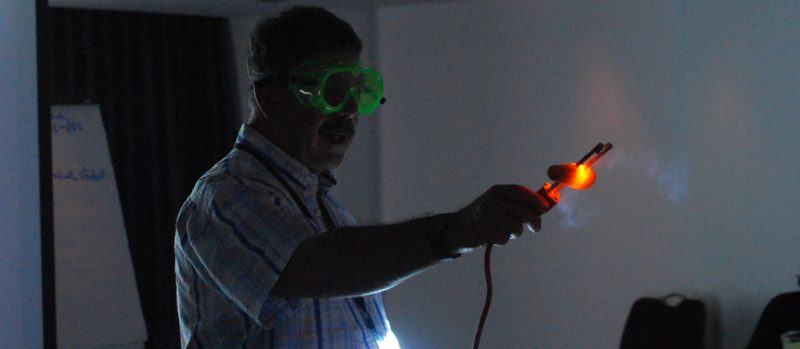
High school biology teacher Randa Flinn sent four students to the Florida state science fair this year, the most representatives of any public school in her district. One of those students, a junior, returned home with a blue ribbon for her investigation of the vulnerability of nematodes to a bacterial parasite. A year earlier, six of Flinn’s students placed at a regional science fair — the first time in more than a quarter century that a student from her school, Northeast High School in Oakland Park, had won any science fair award.
This surge in science-fair success didn’t come out of nowhere. It emerged after Flinn introduced a course on conducting scientific research to Northeast’s curriculum. The class was made possible by an $8,500 grant Flinn received as part of her 2010 fellowship with Society for Science & the Public, or SSP (publisher of Science News for Kids). Two years later, the school and its students are still reaping benefits.
With support from Intel, these fellowships help science teachers foster independent research by under-resourced students. In addition to the grant, SSP Fellows attend a weeklong institute — essentially a summer training session — in Washington, D.C. There they learn how to get their students involved in conducting research.
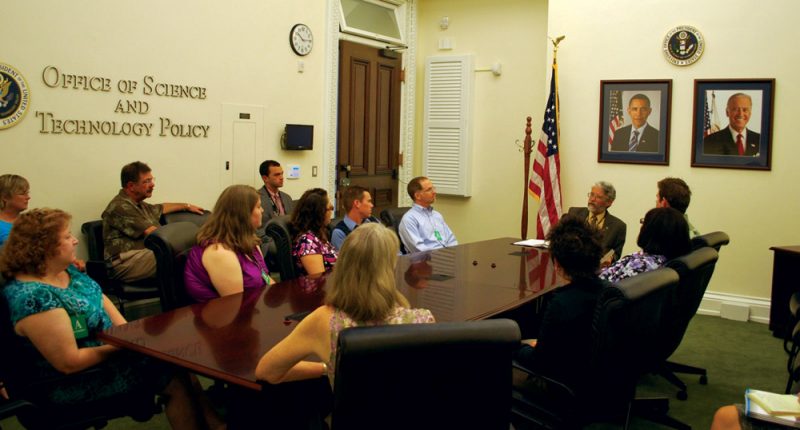
The goal of these fellowships is not necessarily to churn out more science fair winners (although that’s a welcome outcome). Rather, the goal is to educate teachers on how to guide students into their own scientific research.
Such investigations help students better understand how science works and get them excited about the subject. At the same time, such inquiries can sharpen a student’s ability to communicate and think critically.
“Are we going to make scientists out of all students? No. But can we make them all better problem-solvers? That’s the goal,” says 2012 SSP Fellow Denise Gordon, a science teacher at the Applied Learning Academy in Forth Worth, Texas.
The SSP Fellowship is one way for teachers to kick-start student research. “It helped me immensely,” says Flinn. But it’s not the only way to get started. Current and past SSP Fellows share advice on how to bring student research into any classroom.
Why student research?
Exploding baking-soda volcanoes. Dissecting frogs. Bending the flow of water from a faucet with a recently used comb. These are the types of activities that probably come to mind when kids — even at the high school level — think of scientific research. Although such experiments are educational and sometimes even investigative, they aren’t research. That’s because they all have predetermined outcomes. Instead, such demonstrations are really meant to help visualize scientific concepts.
However, “That’s not what scientists do. They’re looking for something new,” science teacher Bill Wallace of the Georgetown Day School in Washington, D.C., explained at the 2012 Fellows Institute in August.
Allowing kids to ask questions, study background information on a problem and then test their own predictions reveals the true nature of scientific inquiry. Along the way, tweens and teens will learn that biology, chemistry, physics and earth science are not static bodies of knowledge, but enterprises that churn out new discoveries every day.
Conducting research also helps kids become independent learners, Gordon says. “The hope is [that] they design and generate their own research rather than the teacher telling them what to do. It empowers the students.”
During the research process, students learn how to interpret, explain and share experimental results — skills that prepare them for college. “They need to know how to write, how to read and analyze sources and they need to know how to problem-solve,” says Steven Wilkie, a 2012 SSP Fellow and marine sciences teacher at South Fort Myers High School in Fla. Yet “we don’t teach them that,” he says, because the emphasis is instead on preparing kids to pass state tests.
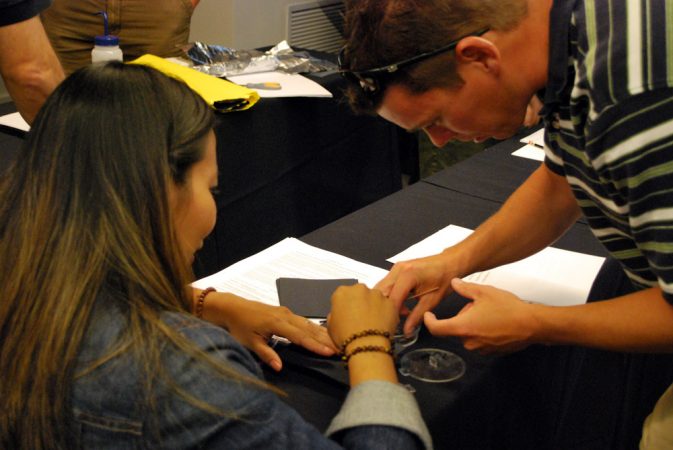
But state standards don’t have to be a barrier to adding research to science classes; they can be a justification for it.
Because a science project requires skill in math, reading and writing — core subjects on most standardized tests — research can be “a way to take the standards and embed them across the curriculum,” argues Lillie Bryant, a 2012 SSP Fellow and biology teacher at Reed Resource Center School in Shuqualak, Miss. Indeed, Bryant convinced her school superintendent to let her build a student research program by explaining how it could help improve test scores.
Getting started
Not all science teachers have the opportunity to create a class devoted to research methods. Still, there are ways to introduce students to the concepts of research in any conventional science class.
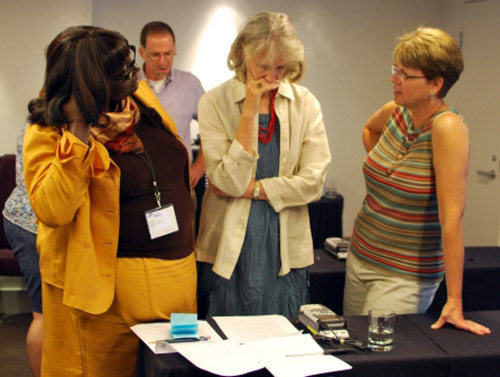
Perhaps the simplest way is to have kids read articles about new scientific discoveries in publications like Science News for Kids or Science News, suggested 2012 Fellows Institute instructor Cheryl Lindeman, a biology teacher at Central Virginia Governor’s School for Science and Technology in Lynchburg. Afterward, kids can discuss why a scientist wanted to investigate a particular question and then brainstorm potential follow-up studies — including hypotheses, predictions and methods to test those predictions. Even if the kids never get to do the projects, they’re still learning the steps of research and how to think like a scientist.
Introducing these concepts with a fun demonstration will grab kids’ attention. Retired physical science teacher Martin Shapiro, an instructor at the 2012 Fellows Institute, recommends the electric pickle experiment. He pierces a dill pickle with two metal skewers, then hooks them up to an electrical source. Before kids’ eyes, the pickle begins to glow (or ignite, if you’re not careful!). Prior to the big plug-in, he asks students to predict what will happen. Afterward, the class ruminates about why those predictions were — or were not — met.
Even seemingly more complicated aspects of experimentation, such as data analysis, can be easily included in these first forays into research.
Wallace likes to have his students study pill bugs, those roly-poly wood lice (from the genus Armadillidium). He instructs his students to introduce the bugs to “choice chambers,” essentially two enclosed petri dishes connected by a passageway. Kids are instructed to leave one chamber empty and alter the environment of the other by adding food or water, making it dark — whatever variable they want to test. Before adding bugs to both chambers, the students write a hypothesis explaining how they predict the roly-polys will react to the two environments.
Then, as the bugs move (or don’t) between chambers over the next 5 minutes, the students record at 30-second intervals how many roly-polys are in each petri dish. Afterward, they draw line graphs to illustrate their data. A class discussion on how to interpret what the graphs say about the pill bugs’ behavior demonstrates how scientists use such analyses to determine whether their results support their predictions. Having the students repeat this experiment several times also reinforces the idea that researchers need to replicate their tests to validate their findings.
This pill bug activity is “easy but open-ended and therefore an authentic research experience,” Wallace explains.
Making connections
Introducing research to an existing class is far easier than developing research courses that allow students to design their own science fair projects. Moving to the science-fair mode can also require more resources than many schools can afford. Therefore, teachers have to be on the lookout for additional partners and funding sources.
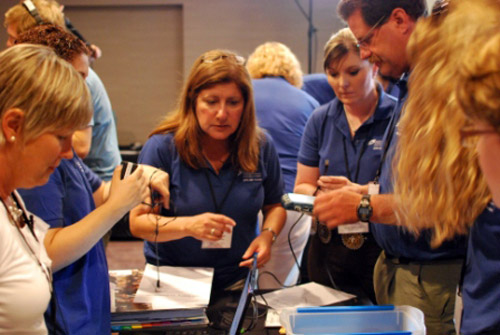
The SSP Fellowship is just one option. Many universities and science organizations offer grants for outreach programs aimed at fostering research. Flinn, for example, helped her school win a $9,570 Lemelson-MIT InvenTeams grant that allowed her students to develop a water filtration system. It relied on common, natural materials that could be used as part of some disaster relief program. Once she completed her first grant proposal, Flinn notes that it became much easier to write additional ones.
Sydney Bergman, a 2010 SSP Fellow and biology teacher at School Without Walls in Washington, D.C., says many professional development courses offer perks beyond the training — such as access to libraries that loan teachers equipment and materials. For instance, the Milwaukee School of Engineering’s Center for BioMolecular Modeling sends teachers physical, three-dimensional models that demonstrate the structure of proteins, DNA and other molecules. The materials are free of charge; teachers just have to pay return shipping costs.
Thinking local is also key, Flinn adds. Ask local businesses, universities and community organizations to make donations to foster student research. “When they see wonderful kids doing wonderful things, they want to be a part of it,” she says. Not only does their support reflect well on community members, but once they take part, recruiting them in the future can be a far easier sell.
And keep in mind that donations don’t have to be monetary. University scientists and industry researchers make good student mentors, especially when it comes to science fair projects. But begin with small favors, Bergman recommends — like inviting them to give career talks or class demonstrations.
Developing a student research program can be overwhelming. That’s why all of the SSP Fellows emphasize the importance of starting small and building slowly. “Be patient,” Bergman says. “Don’t try to do everything at once.”